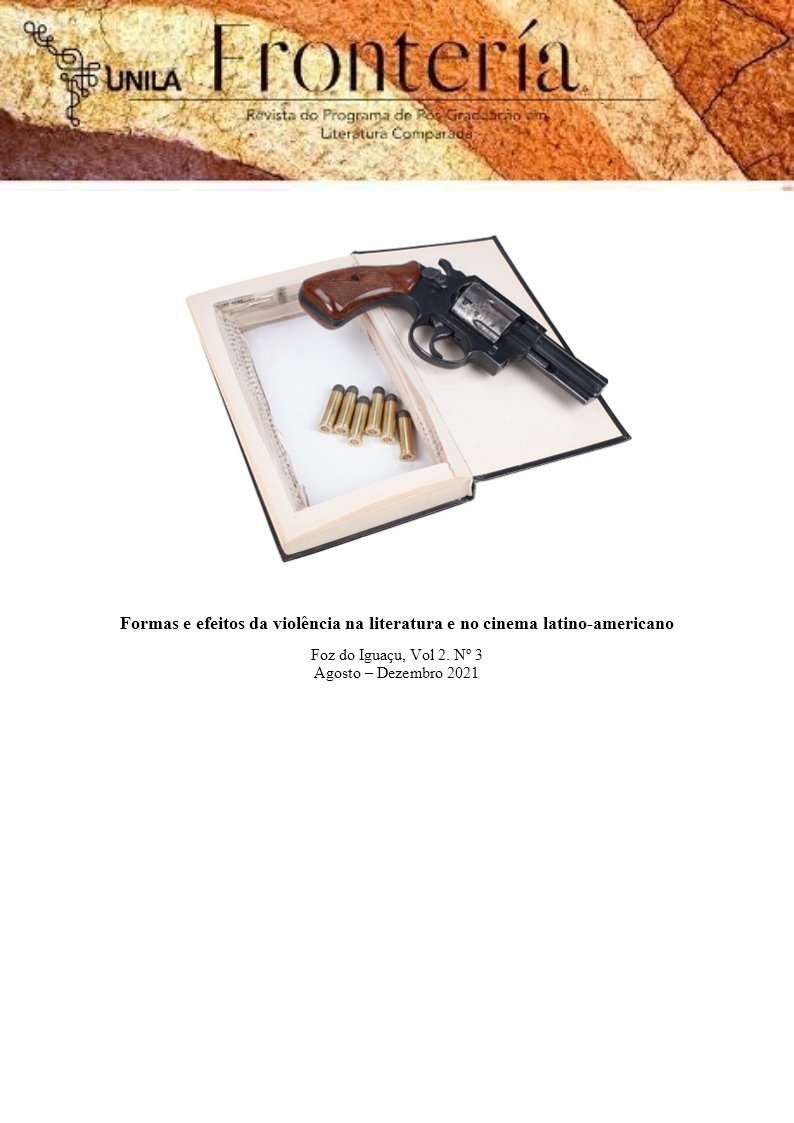Uma resistência no entre-lugar
a reading of the character Amélia from the novel Chove nos Campos de Cachoeira, by Dalcídio Jurandir
Keywords:
Keywords: ideological formation, discourse, inferiorization, black women, resistance.Abstract
The study aims to focus, in particular, on statements that refer to discursive formations colonies of inferiorization based on color. Therefore, the novel “Chove nos Campos de Cachoeira” by Dalcídio Jurandir brings some characters that corroborate the emergence of rifts between the white man and the black woman. To accomplish this intent, it is necessary to profile the character Amélia as a woman, poor and, above all, black in a social context constituted by the Eurocentric ideological formation. It is in proposing to Amélia that we find a black woman who talks and laughs. The former marks the displacement of his subordination, the latter marks his resistance to the “enunciative events” that are inscribed in an ideological formation. However, the methodology is to study Amélia's actions through authors who draw attention to the black condition, especially women, in the face of inferiority discourses. Writers such as Hugo Achugar, Gayatri Chakravorty Spivak, Frantz Omar Fanon and others guide the position of the character under discussion.
Downloads
References
ACHUGAR, Hugo. Planetas sem boca: escritos efêmeros sobre arte, literatura e cultura. Trad. Lisley Nascimento. Belo Horizonte: UFMG, 2006.
ANZALDÚA, Gloria (1981). “Speaking in tongues: a letter to Third World women writers”. In: MORAGA, Cherríe & ANZALDÚA, Gloria (orgs.). This bridge called my back: writings by radical women of color. New York: Kitchen Table, p. 165-74.
BHABHA, Homi K. O Local da cultura. Trad. Myriam Ávila, Elian Lourenço de Lima Reis, Glaucia Renate Gonçalves. Belo Horizonte: Editora UFMG, 1998.
DALCASTAGNÈ, Regina. EBLE, Laeticia Jensen. Literatura e exclusão. Porto Alegre, Zouk, 2017.
FANON, Frantz. Pele Negra. Mascara Branca. Rio de Janeiro: Ed. Fator, 1993.
HAROCHE, Claudine; HENRY, Paul; PÊCHEUX, Michel. [1971]. A Semântica e o corte saussuriano: língua, linguagem, discurso. In: BARONAS, R. L. Análise do Discurso: apontamentos para uma história da noção - conceito de formação discursiva. São Carlos: Pedro & João Editores, 2007, pp. 13-32
INDUSKY, Freda. As noções de sujeito em análise do discurso: do desdobramento à fragmentação. In: ENCONTRO DA ANAPOLIS, 15, Niterói. 2000.
_______________Unicidade, desdobramento, fragmentação: a trajetória da nação de sujeito na nalise do discurso. In: MIIMANN, Solange; Evandra; CAZARIN, Ercília Ana ( Org. ). Práticas discursivas e identidade: sujeito e línguas. Porto Alegre: Nova Prova, 2008.
JURANDIR, Dalcídio. Chove nos Campos de Cachoeira. 4 ed. Belém: Cejupa, 1995.
PACHECO, Agenor Sarraf. Paisagens Enegrecidas: Linguagens e vivencias afroindígenas em narrativas marajoaras. In: Asas da palavra – revista de letras, V.13n. 26. Belém: UNAMA, 2010/2011.
PÊCHEUX, Michel. O discurso: estrutura ou acontecimento? Trad. De Eni Puccineli Orlandi. Campina: Pontes, 1990.
SILVA, Cidinha da. Sobre-viventes. Ed. Rio de Janeiro: Pallas, 2016
SANTIAGO, Silviano. Uma Literatura nos Trópicos. São Paulo: Perspectiva, 1978.
SPIVAK, Gayatri Chakravorty, 1942-. Pode o Subalterno Falar?. Trad. Sandra Regina Goulart, Marcos Pereira, André Ferreira Feitosa. Belo Horizonte UFMG. Belho Horizonte, 2010.
Downloads
Published
How to Cite
Issue
Section
License
O envio dos trabalhos implica a cessão imediata e sem ônus dos direitos de publicação para a revista. O autor é integralmente responsável pelo conteúdo do artigo e continua a deter todos os direitos autorais para publicações posteriores do mesmo, devendo, se possível, fazer constar a referência à primeira publicação na revista. Esta não se compromete a devolver as contribuições recebidas. Destaca-se, ainda, que a revista é filiada ao sistema CreativeCommons, atribuição CC-BY (https://creativecommons.org/licenses/by/4.0/).




